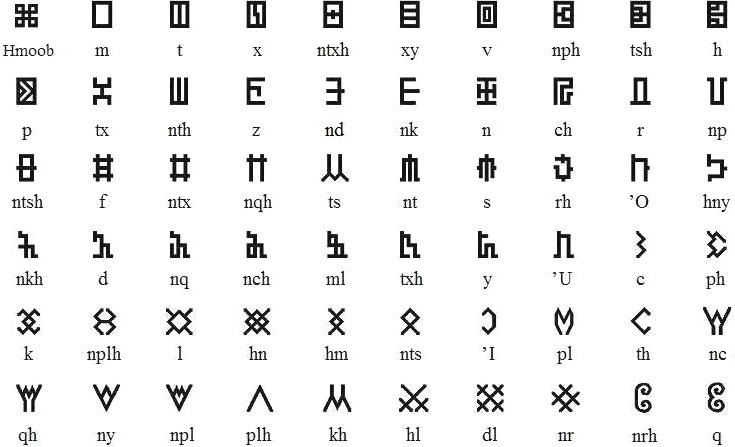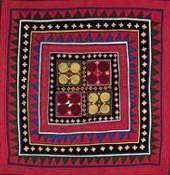This is an alternative system for writing the Hmong/Mong language, thought to have been invented a long time ago (but see note below) and based on traditional woven symbols. It is called Paj Ntaub, translating roughly as “flower cloth script”. Although not as well-known as the RPA (Romanized Popular Alphabet) designed in 1953 by Smalley, Bertrais and Barney, or the Pahawh Hmong alphabet invented in 1959 by Mr Soob Lwj Yaj, there is much interest among young Hmong people seeking an authentic-looking orthographic identity. Mr Nom Dawb Xyooj is actively promoting it in America.
Consonants 
Here and below, each glyph is given with the RPA equivalents. The first glyph is a symbol for the Hmong ethnic group, its language and culture. The glyphs are arranged by shape.

Vowels 
Vowels follow a consonantal onset glyph in a regular CV syllabic form.

Tonal markers 
The tone markers cross through the middle of the vowel glyph. The regularity and efficiency of this vowel+tone method is a clue to the recent origin of the Paj Ntaub system – it shows an understanding of modern phonetics. Prior to the 1950s, there were no written languages anywhere in the world which made good account of tones. During that period, researchers and missionaries in Southeast Asia and China were beginning to think about, and introduce, such ideas.

Numerals 
These follow the common manner of counting, without the separate glyph for 10 which is found in Pahawh Hmong.

This script (among others) is noted in the Hmong Language online encyclopedia.

